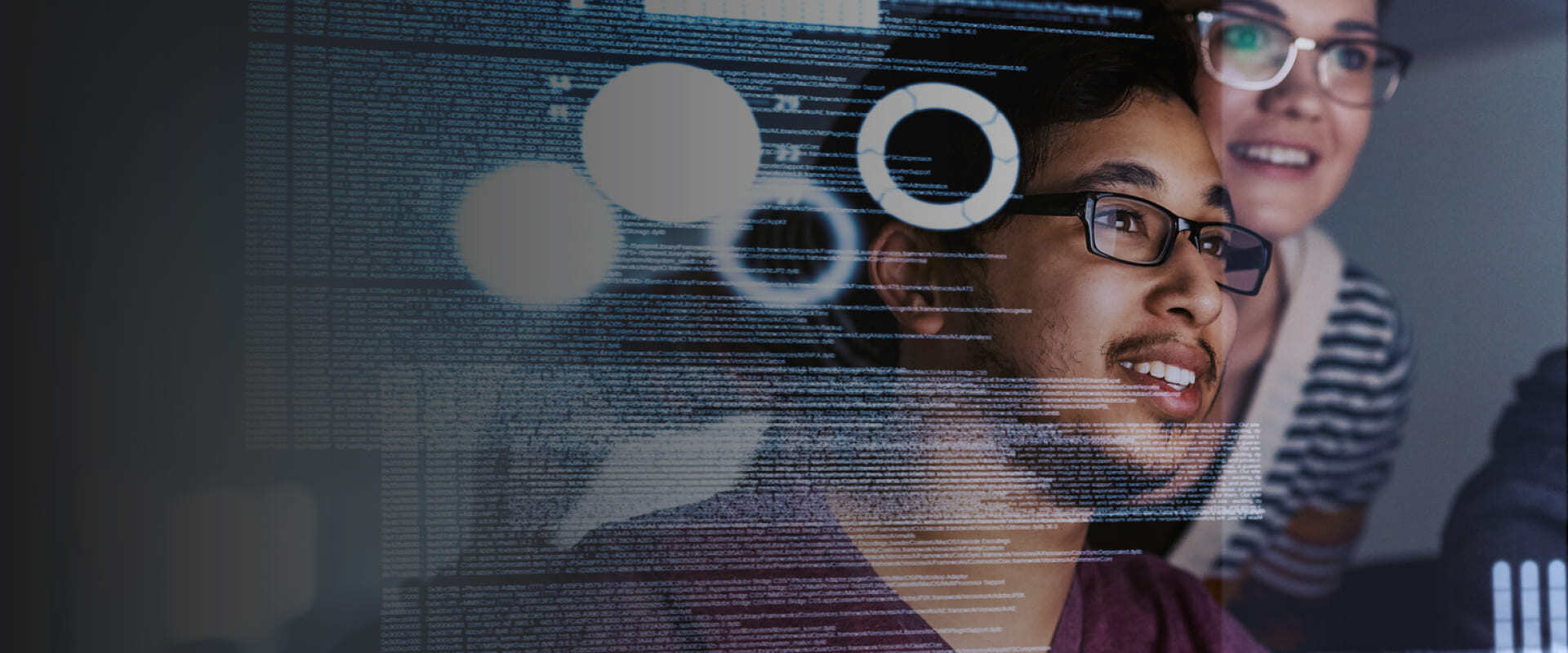Atlas Systems Named a Representative Vendor in 2025 Gartner® Market Guide for TPRM Technology Solutions → Read More

Remote Work Cybersecurity: Protecting Your Workforce Beyond the Office


10 min read | Last Updated: 22 Aug, 2025
The remote work revolution has reshaped how businesses operate. From cutting overhead costs to accessing global talent, organizations are embracing flexible work models like never before. But with this agility comes a new set of risks, ones that can’t be solved with traditional office-based IT strategies.
With the rise of remote work, cybersecurity has become a top priority as employees access company systems from various locations, including their homes, shared workspaces, and public cafes. This shift has dispersed sensitive data beyond the security of traditional office networks, creating new entry points for malicious actors to target.
So how do you keep systems secure when your workforce is everywhere? What cybersecurity practices truly protect remote workers, and how can businesses adapt without stifling productivity?
This guide provides a detailed explanation of remote work cybersecurity best practices, while also illustrating the changing responsibilities of IT teams and demonstrating how companies such as Atlas Systems support organizations in protecting their remote workforce across the entire organization.
What is Remote Work Cybersecurity?
Remote work cybersecurity refers to the policies, technologies, and best practices used to safeguard an organization's data, systems, and communications when employees work outside the traditional office setting. In essence, it’s about extending your company’s security perimeter to every home office, coffee shop, and remote location where work occurs. This includes protecting sensitive information on off-site devices, securing remote network connections, and ensuring only authorized access to corporate resources.
Without the controlled environment of an office, remote employees rely on home networks and personal or company-issued devices that may lack enterprise-grade defenses. They often connect via unsecured Wi-Fi or share networks with family and IoT gadgets, making them a “soft target” for hackers.
Remote workers also don’t have on-site IT support readily available, so they are more vulnerable to social engineering tricks like phishing emails or fraudulent messages that impersonate colleagues. All these factors elevate the risk of data breaches, malware infections, and other cyberattacks in remote environments.
Effective remote work cybersecurity, therefore, spans multiple domains:
- Human factors: Training and awareness to prevent mistakes and detect scams
- Device and network security: Securing home Wi-Fi, using virtual private networks (VPNs), firewalls, and up-to-date antivirus/endpoint protection
- Access controls: Strong authentication (ideally multi-factor), strict password policies, and the principle of least privilege for data access
- Data protection: Encryption of sensitive data at rest and in transit, secure file-sharing practices, and regular backups
- Monitoring and response: Tools for continuous monitoring of remote endpoints and networks, and incident response plans that account for remote scenarios
In the next section, we'll explore effective strategies for safeguarding remote workers. These strategies create a multi-layered protection system to counter the most prevalent remote work security threats, including phishing scams and unsecured home networks.
Best Practices for Securing Remote Workforces
Remote work is here to stay, but so are the cybersecurity risks that come with it. Below are some essential best practices to help secure your remote workforce effectively. These recommendations balance protection with usability and can be adapted to fit organizations of all sizes and industries:
1. Robust Training Programs
A significant number of cybersecurity breaches are the result of neglectful actions by personnel: opening a suspicious email or using the public WiFi connection at a local coffee shop. These issues are arduous to locate and eliminate once they have infiltrated the system. It is crucial to be vigilant in the face of such threats and take proactive measures to prevent them.
Cybercriminals rely on internal inefficiencies to assist their machinations. Therefore, training should be at the top of the list, creating a group mindset to be ever-vigilant.
It is crucial to educate every employee who uses a company device (in and out of the office) on the protocols for cyber-protection and the necessity to stay vigilant. It’s vital that the entire staff shares in the cybersecurity responsibility and signs off on it. How do you do this?
- Commission the IT department to draw up a set of rules and guidelines (i.e., a cybersecurity policy), attuned explicitly to finding trouble before it finds you.
- Develop podcasts or videos on the subject, reminding employees of the unique responsibilities accompanying the use of corporate devices and software out of the office.
2. Reorientate your IT team
The IT team’s focus has been on systems designed for human interactions, mostly in a concentrated space (i.e., the office), not in locations spread far and wide. Old IT thinking has severe limitations, but with AI Transformation, companies are looking beyond. They need to shift their sights, ensuring that every home unit functions as tightly and safely as if the operators were sitting shoulder to shoulder at their desks.
IT professionals must change over to an expansive outward overview, taking in a diverse spread of IT cybersecurity issues.
3. Make sure the VPN is up to speed
Employees working from home are inevitably going to depart the house to get a change of scenery. Therefore, the cybersecurity policy mentioned above must go overboard on things like leaving devices in cars and patching into public Wi-Fi systems.
In the latter case, the VPN should encrypt the internet traffic passing through their devices and pinpoint and erase infections. One crucial thing to note here is that not all VPNs reflect the same capabilities. Companies should choose to work with a provider that can:
Meet the highest standards of excellence. Simultaneously, keep the cost down so that it makes ROI sense.
One crucial step: IT teams should structure the corporate VPN to cover all home offices, which means nailing down that:
- The approved firewalls are functioning well.
- Passwords meet acceptable standards (especially on each home’s Wi-Fi)
- All the right equipment, firmware, and apps are in place.
4. Effective password management
Password management deserves its own slot in this conversation.
Appoint a human or automatic password manager to randomly generate passwords for employees in remote locations with secure cloud or on-premises storage. It’s a proactive and decisive step that ensures password protection remains front and center in a dynamic and organized manner.
Also, passwords align closely with decisions of who in the company is allowed to see what. Data access is by no means a free-for-all, so password management and filtering them through to the appropriate people, no matter where they sit, is a daunting but essential challenge to overcome.
5. Make encryption software integral to the remote working environment
It creates peace of mind knowing that if any device or files are stolen or lost, they are encrypted. SaaS developers have made significant strides in the encryption arena, protecting digital assets in file format, emails and texting content, and applications.
The contemporary trend of remote working has brought to the forefront the need for encryption protocols to be accorded high priority in the cybersecurity domain. Consequently, any form of inter-employee communication, even those transpiring at high velocity, warrants the application of encryption mechanisms to ensure confidentiality, integrity, and authenticity.
6. Implementing robust security systems
Management must leave no stone unturned in providing remote working employees with watertight firewalls. It involves installing virus protection software on computers, tablets, and mobile devices in the home offices.
Moreover, a disaster capability of wiping storage clean in the event of theft or loss is critical wherever data is extra-sensitive. It’s not a massive leap to tie most mobile device management platforms into a protection strategy that’s so comprehensive.
Securing Remote Workforces with Atlas Systems’ Right Framework
Implementing all the above best practices might seem overwhelming; this is where partnering with the right experts can make a big difference. Atlas Systems offers a comprehensive framework to secure remote workforces, helping organizations put the proper measures in place smoothly and effectively. With deep expertise in cybersecurity and IT risk management, Atlas Systems acts as an extended arm of your IT team to fortify your remote operations.
Atlas Systems secures remote workforces through a three-step process:
1. Assess: Conduct a thorough assessment of remote environments to detect potential vulnerabilities, focusing on home networks and endpoints.
2. Enable: Implement robust security measures, including endpoint protection, password management, multi-factor authentication, and secure VPN and cloud setup, while adopting a zero-trust model with limited user access and ongoing verification.
3. Manage: Our around-the-clock managed security solutions use AI-powered threat identification and rapid incident response capabilities. You can continuously monitor endpoints and network activity in real-time, triggering immediate alerts and containment actions for potential threats such as malware and suspicious login attempts.
This holistic approach ensures continuous protection, addressing both technology and policy to safeguard distributed teams.
Choose Atlas Systems to partner with experts who understand the complexities of securing remote work in today’s AI-driven, hybrid-cloud world. We bring proven templates, compliance-ready best practices, and scalable solutions, whether you're securing a small remote team or a global workforce.
With Atlas Systems, you gain not just tools but end-to-end support to implement remote work cybersecurity best practices effectively. Our managed services reduce the burden on internal teams, allowing your organization to embrace the benefits of remote work like flexibility, productivity, and access to global talent, without compromising on security.
Frequently Asked Questions
1. What risks do remote workers face?
Remote employees are exposed to a multitude of cybersecurity threats, such as unsecured home internet connections, poor password management, and unauthorized access to company systems. Devices used outside the company network are more susceptible to malware, particularly when security updates are delayed or personal applications become intertwined with business data. This vulnerability elevates remote workforce cybersecurity as a major priority for IT administrators.
2. Is using a VPN essential when working remotely?
For remote work, a Virtual Private Network (VPN) is a must-have. It safeguards online communications by encrypting data, shielding sensitive information from interception, and granting secure access to company assets. A trustworthy VPN is a fundamental component of any remote work cybersecurity plan, particularly for employees working on public or unsecured networks.
3. How can I secure my home Wi-Fi and router?
To secure your home Wi-Fi and router:
- Use a strong, unique password
- Change the default admin credentials
- Enable WPA3 encryption (or at least WPA2)
- Keep firmware up to date
- Disable remote management if not needed
These steps significantly improve remote work safety, cybersecurity , and reduce the risk of unauthorized access to work devices.
4. What role does MFA play in remote security?
Implementing multi-factor authentication (MFA) significantly enhances security by necessitating users to confirm their identity via an additional verification method, such as a mobile app or physical token. This approach minimizes the threat of compromised login credentials and is a fundamental security guideline for remote workers, particularly when accessing cloud-based services, virtual private networks, and company software.
5. How do I prevent phishing and social engineering?
To prevent phishing and social engineering attacks:
- Conduct regular employee training
- Use email filtering and anti-phishing tools
- Encourage users to report suspicious messages
- Implement zero trust policies for critical actions
Education and vigilance are key. Embedding these habits strengthens your organization’s remote work cybersecurity posture and helps prevent human-error-driven breaches.
Related Reading
Blogs
.png?width=869&height=597&name=image%20(5).png)

.png?width=300&height=175&name=Rectangle%2034624433%20(2).png)







.png?width=645&height=667&name=Widgets%20(2).png)







.png)

